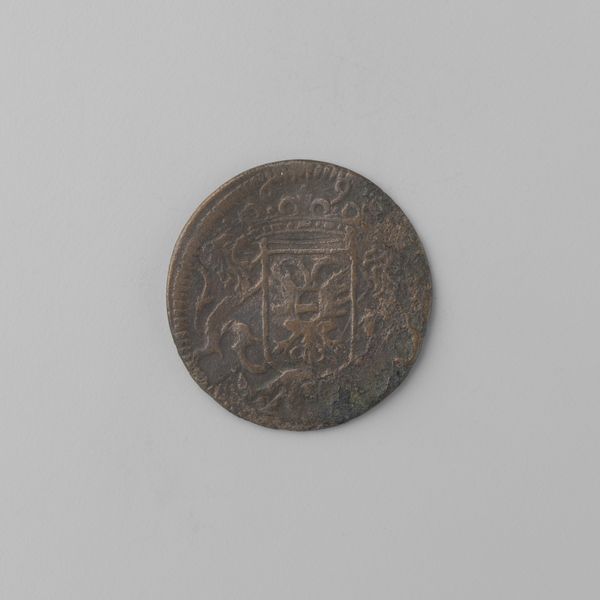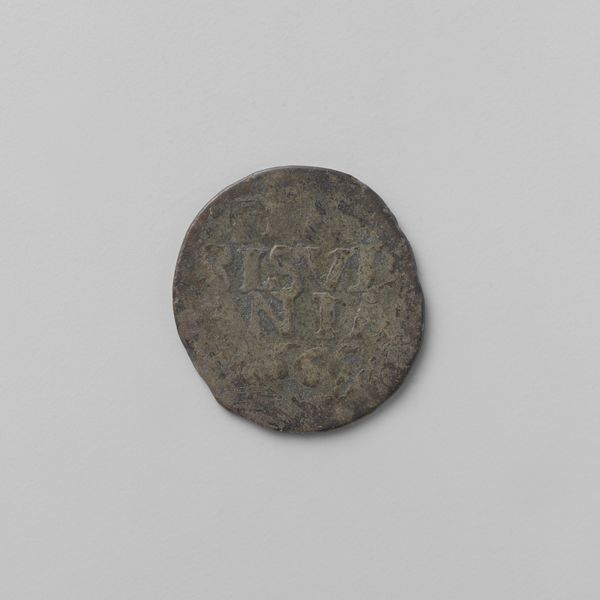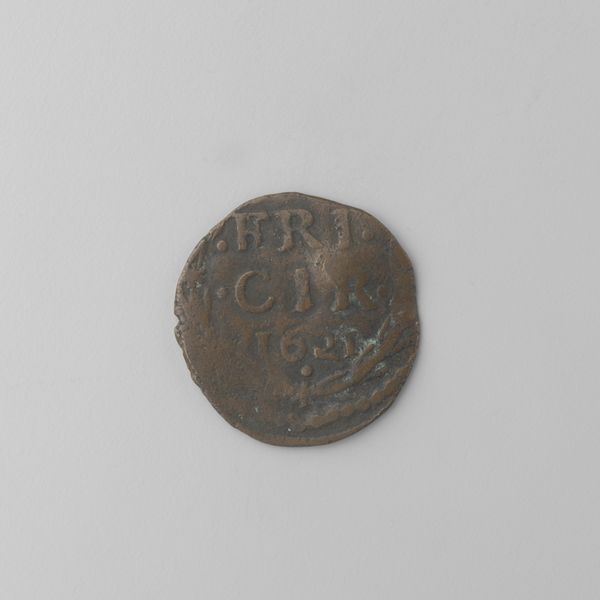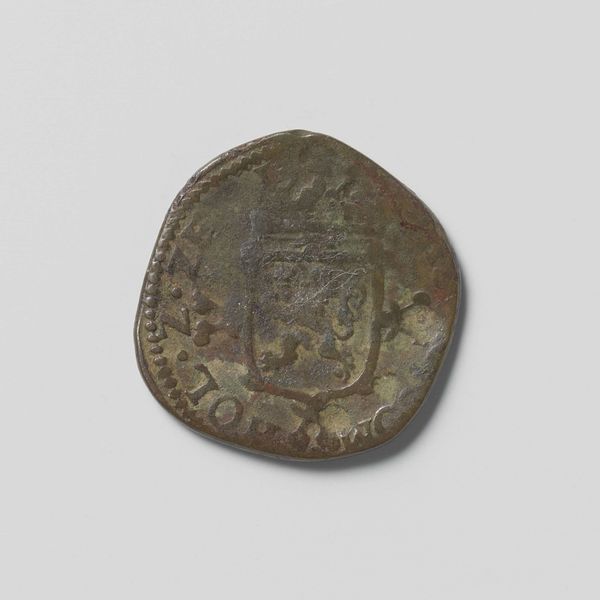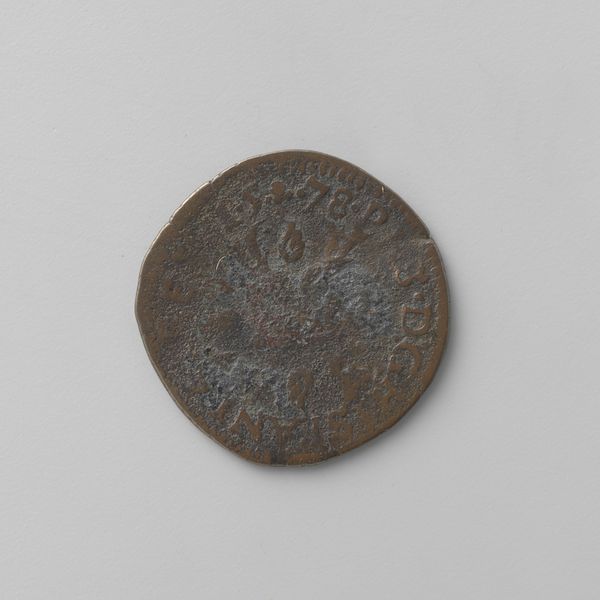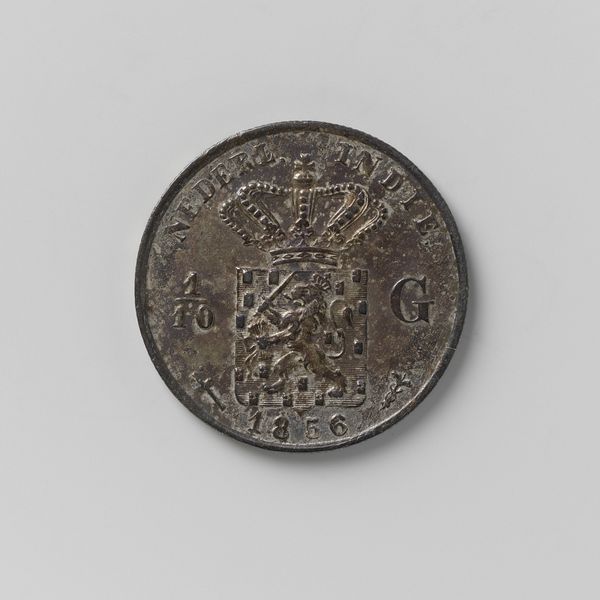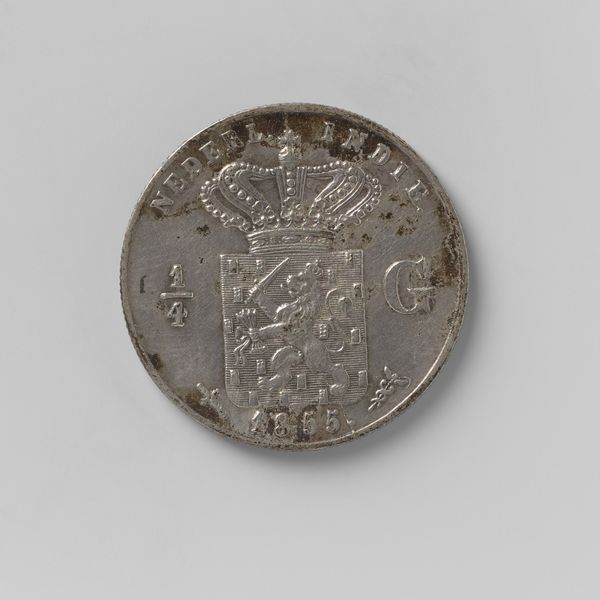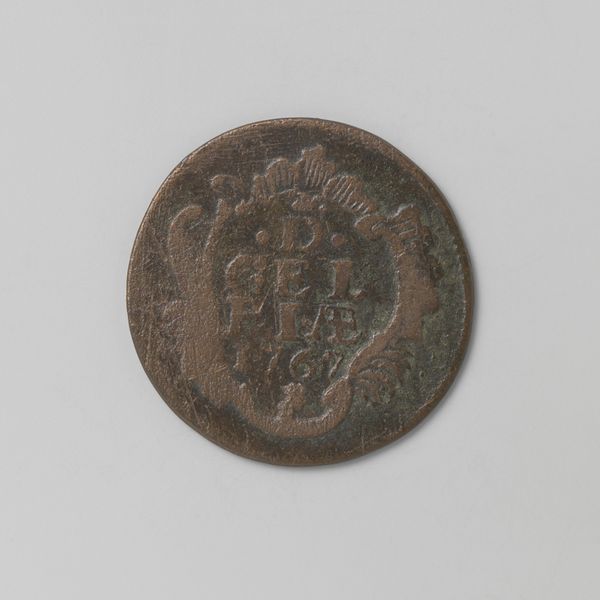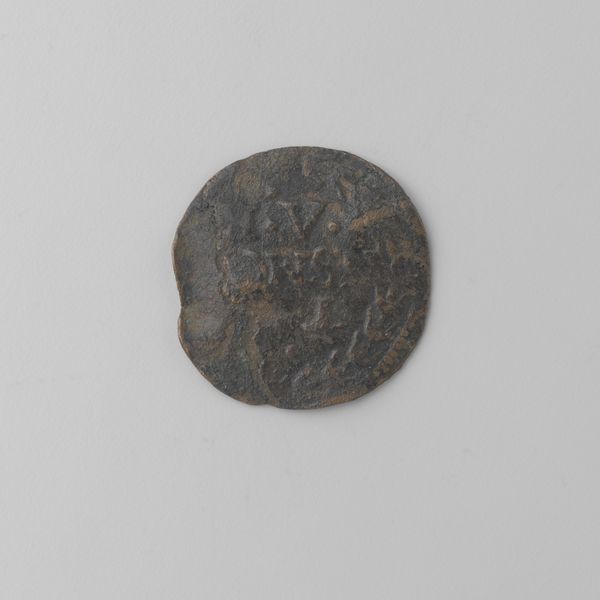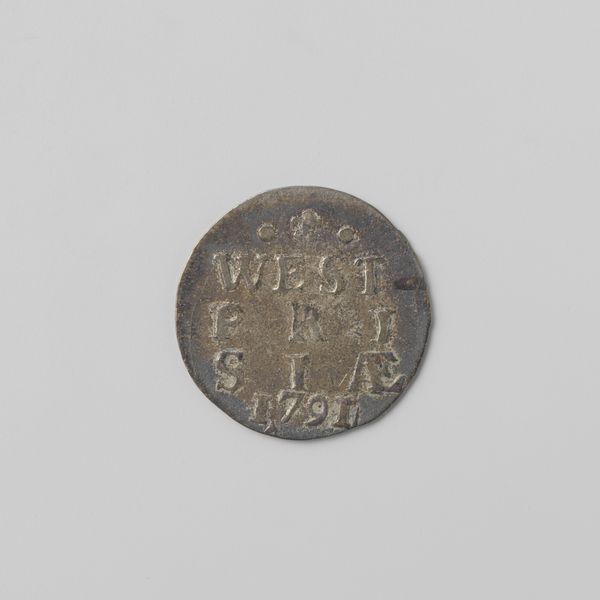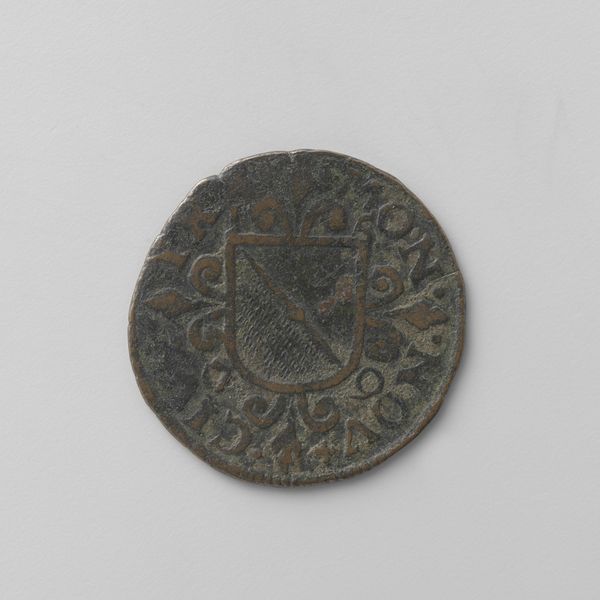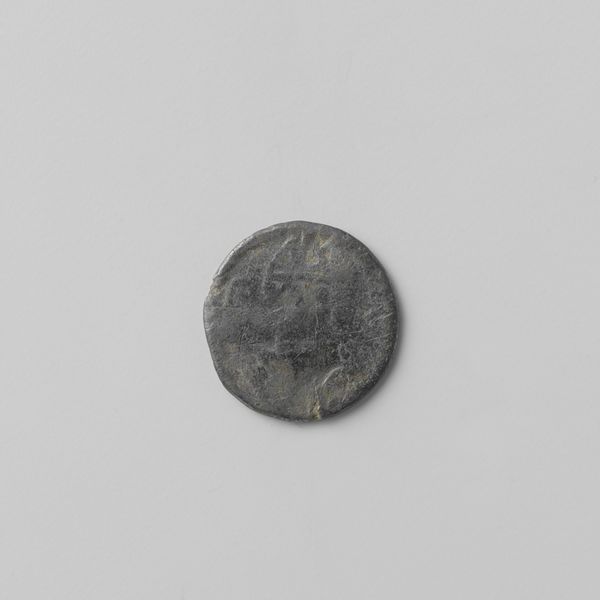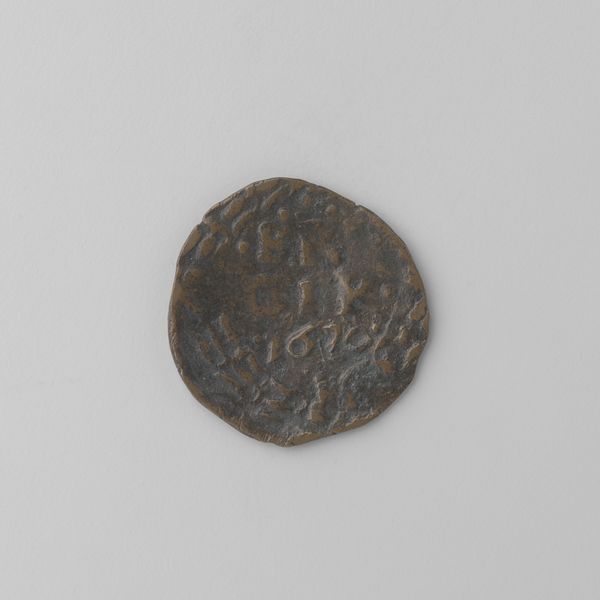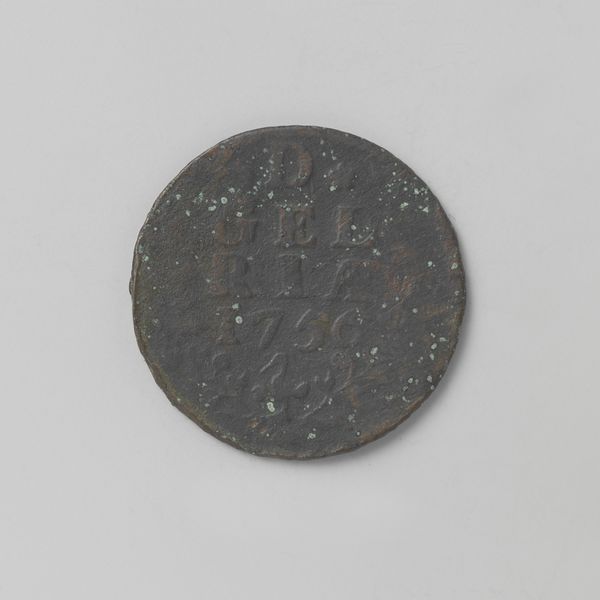
print, metal
#
dutch-golden-age
# print
#
metal
#
geometric
#
ancient-mediterranean
Dimensions: diameter 1.9 cm, weight 1.6 gr
Copyright: Rijks Museum: Open Domain
This is a Gelderse dubbele stuiver, a coin made of silver in 1789 by the Province of Gelderland, now a province in the Netherlands. Coins like this one reflect the political landscape of the Dutch Republic during the late 18th century. Gelderland, like other provinces, had its own mint and issued its own coinage. This was a visual assertion of regional autonomy within the larger republic. The inscriptions on the coin, abbreviations of Latin phrases, reflect the influence of classical learning and the use of Latin as a language of administration and authority. Consider how this imagery reinforces the power structures of the time. Who controlled the mint, and how did they use coinage to communicate power? Historians of economics, politics, and culture use coins like this as primary source material. Numismatic collections, archival records, and studies of economic history can shed further light on the cultural importance of this coin.
Comments
No comments
Be the first to comment and join the conversation on the ultimate creative platform.
